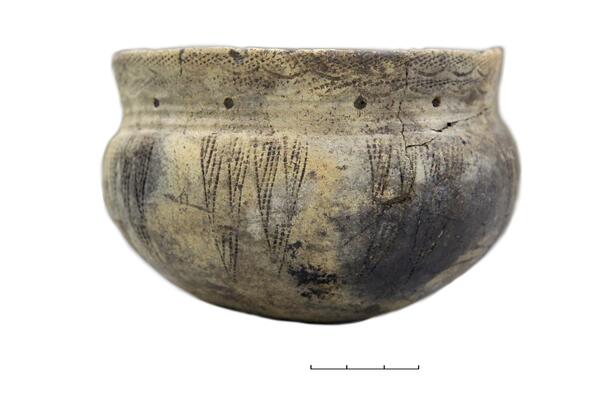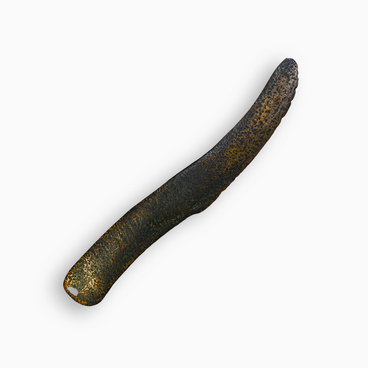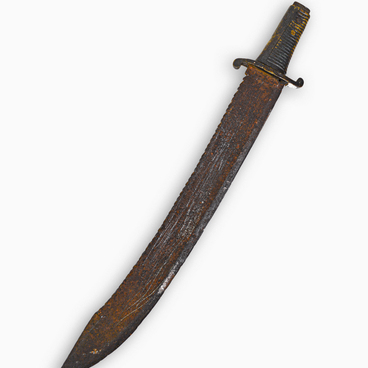The object featured in the museum’s collection was discovered in one of the ground burials during the archeological study of the Borovyanka-XVII burial ground. Despite the fact that the place mostly has burials of the Andronovo (Bronze Age, 14th–11th centuries BCE) and Sargat cultures (5th century BCE — 5th century CE), there are also separate burials of the 13th–9th centuries BCE, belonging to the Suzgun and Irmen archeological cultures that existed in the Irtysh region.
The vessel from the collection belongs to the Suzgun archeological culture. It got its name from the sacrificial site located on the right bank of the Irtysh River, near the city of Tobolsk, in the Suzgun area. Monuments of the Suzgun culture are spread along the Tobol and Irtysh rivers.
All Suzgun vessels discovered by archeologists can
be divided into two types:


